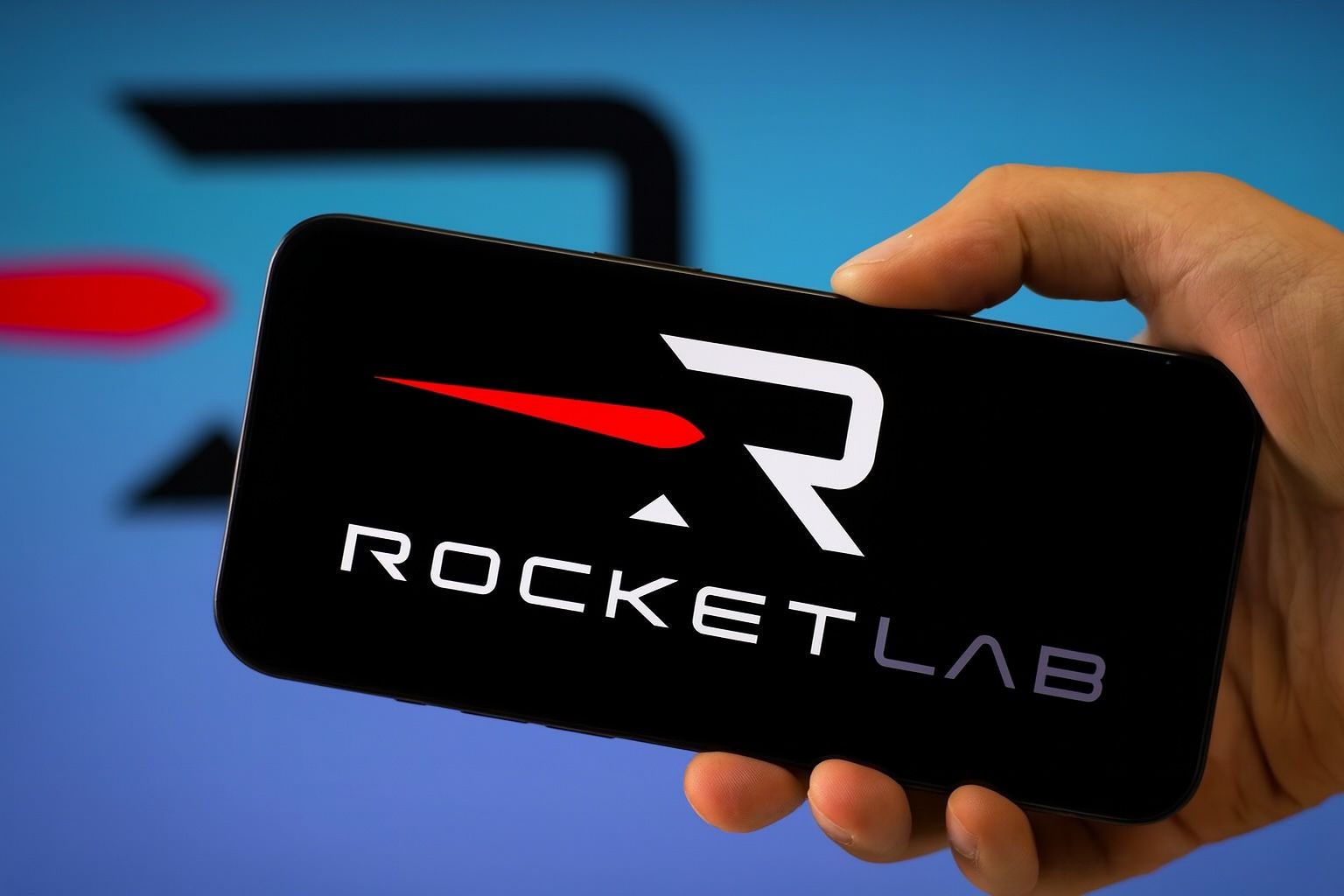- Stock soars but faces volatility: Rocket Lab (NASDAQ: RKLB) shares have skyrocketed roughly 700% over the past year, recently hovering around the $50 mark [1]. An at-the-market (ATM) share offering plan of up to $750 million in mid-September spooked investors, briefly knocking the stock down ~12% [2], but RKLB remains up about 95% year-to-date [3] and near its 52-week high.
- Strong revenue growth (but no profits yet): The company posted record Q2 2025 revenue of $144.5 million (+36% YoY) [4], though it still reported a net loss (~$66 million in Q2). For Q3 2025, management forecast revenue of $145–$155 million with improving gross margins [5]. Rocket Lab’s order backlog is approaching $1 billion (over half expected to convert to sales within 12 months) [6], signaling robust demand ahead.
- Mega launch deal with Synspective: In late September, Rocket Lab secured a major contract for 10 additional Electron launches with Japan’s Synspective, expanding their partnership to 21 dedicated missions – the company’s largest-ever single-customer launch order [7]. As Synspective’s sole launch provider to date, Rocket Lab will deploy a constellation of StriX synthetic-aperture radar satellites through the end of the decade [8] [9]. The next Electron mission, dubbed “Owl New World,” is scheduled to lift off on October 14, 2025 (UTC) as the first of those 21 missions [10].
- Rapid launch cadence and new milestones: Rocket Lab’s Electron rocket is now the world’s most frequently launched small orbital launcher [11]. By August 2025 the company had already flown its 70th Electron mission (“Live, Laugh, Launch” on Aug. 23) – the 12th launch of 2025 [12] – and it plans to exceed 20 launches in 2025 [13]. In September, Rocket Lab delivered two Mars-bound ESCAPADE spacecraft (twin probes “Blue” and “Gold”) to NASA’s Kennedy Space Center, ready for launch to Mars to study its magnetosphere [14]. CEO Peter Beck hailed the achievement: “Delivering two interplanetary spacecraft on schedule and within budget for a Mars mission is no small feat… our team has proven that we can take a concept from design to Mars readiness in just a few short years” [15].
- Expansion into defense and space systems: Rocket Lab is bolstering its space systems division and defense business. In 2025 it announced acquisitions of Geost, LLC for $275 million (to bring in-house advanced electro-optical/infrared missile-warning sensor technology) and German laser-communications firm Mynaric for $75 million [16]. These deals expand Rocket Lab’s satellite components portfolio (e.g. sensors, laser terminals) and European footprint. The company also secured U.S. government contracts – including a hypersonic test launch for the Pentagon’s MACH-TB program and a U.S. Air Force contract to use its upcoming Neutron rocket for point-to-point cargo delivery experiments [17]. Beck noted the Geost acquisition positions Rocket Lab as “a prime contractor for U.S. national security missions,” enhancing its role in programs like the Space Force’s “Golden Dome” missile-defense architecture [18].
- Analysts upbeat but mindful of risks: Wall Street’s consensus on RKLB is bullish, with a Strong Buy rating and an average price target around $50 [19]. Analysts cite Rocket Lab’s accelerating revenue and growing backlog of contracts (e.g. the multi-launch Synspective deal) as drivers for future growth [20]. However, they also urge caution given the stock’s rich valuation – price-to-sales near 50–60× on current revenues [21] – and the execution challenges ahead. The company remains unprofitable and is investing heavily in developing its larger Neutron rocket (a reusable medium-class launcher expected to debut in late 2025 or early 2026) [22]. Insiders have taken some profit as well, with Rocket Lab executives (via pre-scheduled plans) selling roughly $140 million in stock over the past two years [23], including a sale by the CFO in September – a point that tempered some investor enthusiasm.
Recent Launch Contracts & Mission Milestones
Rocket Lab’s fall 2025 has been marked by significant contract wins and mission milestones. The headline news is the expanded partnership with Synspective, a Japanese Earth-imaging company. On September 29, Rocket Lab announced a second multi-launch contract with Synspective for 10 additional Electron launches, on top of an existing deal for 11 launches [24]. This brought Synspective’s total contracted missions to 21 dedicated Electron flights – the largest single-customer deal in Rocket Lab’s history [25]. All 21 missions are slated to launch from Rocket Lab’s Launch Complex 1 in New Zealand over the coming years, deploying Synspective’s StriX synthetic aperture radar satellites that provide high-resolution Earth observation for disaster response, security and environmental monitoring [26] [27]. Sir Peter Beck, Rocket Lab’s founder and CEO, emphasized the significance of reliable, flexible launch timing for constellation deployment, saying “regular and reliable launch on a flexible schedule is essential to the build out of Synspective’s constellation… It’s an honor to add another 10 StriX satellites to Electron’s launch manifest and continue our long-standing partnership” [28]. Synspective’s CEO Dr. Motoyuki Arai likewise praised Rocket Lab’s track record, noting the Electron’s precision and consistent schedule have “enabled us to stay on schedule and achieve our mission objectives… [our] continued collaboration is crucial to accelerating the deployment of our SAR satellites” [29]. This deal underscores Rocket Lab’s role as a go-to launch provider for commercial smallsat constellations – in fact, Rocket Lab has launched all of Synspective’s satellites to date (six StriX satellites across six previous missions) [30].
The next launch for Synspective is already on the calendar. Rocket Lab has set the launch window opening on October 14, 2025 (UTC) for the mission “Owl New World,” which will carry Synspective’s next StriX satellite to orbit [31]. This mission will be Rocket Lab’s 15th launch of 2025 and 73rd Electron launch overall [32]. Notably, Rocket Lab is on track to set a new annual launch record – with 14 missions completed through early October, the company reports a 100% success rate so far in 2025 and is “projected [to reach] 20+ launches in 2025,” far outpacing other small launch competitors [33]. Electron’s rapid cadence has made it the world’s most frequently launched commercial small orbital rocket [34]. In one example of this tempo, Rocket Lab conducted two Electron launches just days apart in June 2025 from the same pad [35], demonstrating quick turnaround capability. Such responsiveness and reliability are critical advantages as companies race to deploy satellite constellations on tight timelines.
Beyond launches, Rocket Lab’s spacecraft manufacturing arm notched a milestone achievement in late September. The company delivered two Mars-bound spacecraft – built by Rocket Lab – to NASA’s Kennedy Space Center on September 22 for the upcoming ESCAPADE mission [36]. These twin small probes (nicknamed “Blue” and “Gold”) were designed and integrated by Rocket Lab in partnership with UC Berkeley to study Mars’ magnetosphere. NASA originally manifested ESCAPADE on a new launch vehicle (Blue Origin’s New Glenn), but Rocket Lab’s faster delivery helped keep the mission on track despite launch vehicle shifts [37] [38]. Impressively, Rocket Lab completed the design, build, and testing of the interplanetary spacecraft in just three and a half years – an unusually swift timeline for a Mars mission [39]. This was enabled by the company’s vertically integrated approach, producing key components like solar panels, reaction wheels, tanks, and software in-house [40]. Peter Beck highlighted the accomplishment, stating “Delivering two interplanetary spacecraft on schedule and within budget for a Mars mission is no small feat…our team has proven that we can take a concept from design to Mars readiness in just a few short years” [41]. The ESCAPADE probes will launch as early as late 2025 or 2026 (likely on a commercial rocket under NASA’s arrangement) – marking Rocket Lab’s first hardware to head for Mars and showcasing its evolution from a pure launch provider to a full-spectrum space company.
Financial Performance and Stock Review
Rocket Lab’s financial results in 2025 illustrate rapid growth with narrowing losses as the company scales up. In the second quarter of 2025, Rocket Lab reported revenues of $144.5 million, a record high and a 36% increase year-over-year [42]. This growth was driven by both the launch services and space systems divisions – notably, in Q2 the Space Systems segment (providing satellite components and spacecraft like Rocket Lab’s Photon bus) generated over $97 million, more than double the $46.6 million from launch services [43]. Demand for satellite hardware has been strong, with contracts such as the Space Development Agency (SDA) constellation fueling the backlog [44]. Rocket Lab’s gross margin has also improved, expanding by about 6.5 percentage points year-on-year [45] thanks to higher launch cadence and operational efficiencies. Still, the firm remains unprofitable, posting a net loss of roughly $66 million in Q2 [46] (and an adjusted EBITDA loss of ~$22 million). The heavy investments in the new Neutron rocket development and recent acquisitions contribute to ongoing losses. However, Rocket Lab’s leadership aims to turn cash-flow positive by 2027 as larger projects come online [47] [48].
Importantly, Rocket Lab’s backlog of contracted business has swelled to roughly $1 billion – a tenfold increase from its SPAC-era backlog – with about 58% of that expected to convert to revenue by mid-2026 [49]. This includes multi-launch deals like the Synspective contract and government programs (the backlog is weighted toward government constellation contracts such as the SDA’s missile-warning satellite network) [50]. To support this growth, the company provided robust Q3 2025 guidance: $145–$155 million in revenue for the quarter, gross margins in the mid-30% range, and operating expenses held around $104–$109 million [51] – indicating that losses are narrowing as scale improves. CEO Beck noted Rocket Lab is “on track for a record year of launches and spacecraft deliveries” in 2025 [52].
Rocket Lab’s stock price has reflected its operational momentum – and then some. RKLB shares have massively outperformed in 2025, rising from single digits to new highs. As of early October 2025, the stock traded around $48–$50, roughly 730% higher than a year ago [53] [54]. In fact, RKLB broke out above the psychological $50 level in September, reaching an all-time high of $55.17 per share [55]. At that peak, Rocket Lab’s market capitalization topped $24 billion, valuing the company at nearly 50× its trailing sales – a rich valuation that prices in substantial future growth [56] [57]. This meteoric rise has not been a smooth ride, however. The stock has shown high volatility, with frequent swings of 5% or more in a day [58]. After the big rally through early September, investor jitters hit in mid-September when Rocket Lab announced a plan to issue up to $750 million in new stock via an at-the-market offering. The ATM offering, disclosed on Sept. 15, effectively gives the company the option to sell shares gradually at prevailing market prices, raising capital for its growth projects. The news immediately sent RKLB tumbling ~12.5% on Sept. 16 as investors fretted about dilution [59]. Yet context is key: even after that drop, the stock was still up over 500% from a year prior [60]. Rocket Lab’s management and many analysts framed the move as a strategic positive, noting that tapping public markets at multi-year high valuations is a wise way to fund expensive endeavors like Neutron development [61]. At $750 million, the ATM program could theoretically fund most or all of the Neutron rocket’s remaining development cost (estimated around $400 million) [62]. In other words, raising this war chest now may ensure Rocket Lab can execute its growth plans without financial strain. Indeed, the stock quickly stabilized after the ATM announcement – within days it bounced from the mid-$40s back to the high-$40s [63]. By early October, shares were trading just under $51, roughly flat to pre-offering levels [64].
Insider selling has also been in focus. Over the past year, several Rocket Lab insiders and early investors have sold portions of their holdings as the stock price surged. According to filings, insiders (including CEO Peter Beck and other executives) have cumulatively sold about $140 million worth of stock in the last two years via automatic 10b5-1 trading plans [65]. Notably, in September 2025 Rocket Lab’s CFO Adam Spice sold approximately $42 million in shares as part of a planned sale [66]. While these sales were pre-scheduled and don’t necessarily signal pessimism, their large scale prompted some debate among investors. Bulls argue that profit-taking after a 700% run-up is expected and that insiders still retain significant stakes (for example, founder Peter Beck reportedly retains around 2.5 million shares after trimming his holdings) [67]. Bears, however, view the selling as a reminder to remain cautious about lofty valuations. So far, the market appears to have digested the insider sales without major impact – RKLB’s uptrend has remained intact, aided by continued contract wins and strong execution. Year-to-date, the stock is up over 100% (approximately +104% as of Oct. 2) [68], and it trades just shy of its 52-week high of $54.04 [69], reflecting ongoing optimism around Rocket Lab’s trajectory.
Competitive Position in the Space Sector
Rocket Lab operates in an increasingly competitive space industry, yet it has carved out a strong niche. In the orbital launch market, heavyweights like SpaceX (with its Falcon 9 and Starship rockets) and Blue Origin (developing New Glenn) tend to dominate headlines and the heavy-lift segment. Rocket Lab, by contrast, focuses on the small-to-medium launch segment with its proven Electron rocket and the upcoming Neutron. This strategy positions Rocket Lab as a complementary player rather than a direct competitor to SpaceX’s high-capacity launches [70]. In fact, Rocket Lab’s agility and specialization in launching small satellites quickly and on dedicated missions have made it a leader in that sub-market. Its Electron rocket has successfully delivered scores of microsatellites to orbit for commercial constellation operators, government research labs, and the U.S. military. The company’s ability to provide responsive, flexible launch services is a key differentiator. As one industry piece noted, Rocket Lab’s fully booked manifest and repeat customers underscore Electron’s “leading position in the small satellite launch market.” [71]
Rocket Lab’s vertical integration – spanning launch vehicles, satellite buses, and components – also sets it apart from many rivals. Few other space companies of its size offer an end-to-end service: Rocket Lab can build a satellite (or major subsystems), integrate it onto its own rocket, and launch it. This has led some analysts to call Rocket Lab one of the few credible potential competitors to SpaceX in the medium-lift arena over the longer term [72]. The forthcoming Neutron rocket (a partially reusable, 8-ton-to-LEO class launcher) is central to that vision. If Neutron comes to fruition on schedule (targeting first flight by late 2025 or early 2026) [73], Rocket Lab would be able to address a broader segment of the launch market – including launching batches of small satellites for megaconstellations or medium-class payloads for NASA and the military. Notably, Rocket Lab has already won selections for Neutron in competitive programs: the U.S. Space Force chose Neutron as one of the vehicles qualified for National Security Space Launch (NSSL) Phase 3 missions later in the decade, and NASA has granted Rocket Lab a launch under its VADR program (Venture-Class Acquisition of Dedicated Rideshare) [74]. These votes of confidence indicate that, even pre-launch, Neutron is being taken seriously as a future workhorse.
Among publicly traded space peers, Rocket Lab’s financial profile highlights both its strengths and the market’s high expectations. Compared to other space companies like Virgin Galactic (suborbital tourism-focused, essentially pre-revenue) or Redwire (space infrastructure and components supplier), Rocket Lab generates significantly higher quarterly revenue and has a much larger contracted backlog [75] [76]. This reflects the company’s more diversified business (launch services plus satellite manufacturing) and its traction with government and commercial clients. For instance, Redwire reported ~$62 million revenue in Q2 2025 [77] – less than half Rocket Lab’s – and is still deeply unprofitable, while Virgin Galactic’s spaceplane flights were paused in 2025, yielding negligible revenue [78]. AST SpaceMobile, another peer (building a space-based cellular network), has a multibillion-dollar market cap but almost no revenue yet, highlighting how speculative many space ventures remain [79]. In this context, Rocket Lab stands out as one of the more operationally advanced new-space companies, with ~$0.5 billion annual revenue run-rate and a track record of 70+ launches. At the same time, Rocket Lab’s stock valuation – with a price-to-sales (P/S) ratio around Fifty-plus – is higher than virtually all peers, indicating that investors are pricing in rapid growth and future profits [80] [81]. By contrast, a legacy-adjacent player like Redwire trades at ~3× sales, and even speculative AST SpaceMobile around ~20× sales (on tiny revenue) [82]. Rocket Lab’s premium valuation can be seen as a bet that it will achieve SpaceX-like scale in launch and spacecraft production over time. It also means RKLB shares could be sensitive to any execution missteps or delays (for example, if the Neutron rocket’s development slips or if launch failures interrupt revenue). So far, Rocket Lab has largely delivered on its promises – achieving a high launch cadence with Electron and expanding into satellite manufacturing – which has helped build credibility in a sector where many startups have stumbled.
Commercial and Defense Market Implications
Rocket Lab’s recent activities carry significant implications for both the commercial space market and the defense/national security arena. On the commercial side, the 21-launch Synspective contract exemplifies the booming demand for launching satellite constellations. Earth observation and communications companies are racing to deploy fleets of satellites in low Earth orbit, and they require reliable, regular launch slots to meet their rollout schedules. Rocket Lab’s ability to sign a multi-year, multi-launch deal – and to execute launches on time – gives it an edge in this market. As Synspective’s CEO noted, having a launcher that can put satellites into orbit on schedule with precision is crucial to achieving their business objectives [83]. In fact, many of Rocket Lab’s 2025 missions have been for constellation deployments on tight timelines, which is “proving the industry’s reliance on Electron” for responsive launch needs [84]. With Amazon’s Project Kuiper, satellite broadband startups, and dozens of Earth-imaging constellations all looking for launch capacity in coming years, Rocket Lab is positioning itself as a trusted provider for these commercial ventures. The company’s expansion into building satellite components (solar panels, radios, etc.) through acquisitions like SolAero (2022) and now Mynaric (2025) further integrates it into the supply chain for commercial constellations. This one-stop-shop approach (satellite hardware + launch) could attract more customers looking to simplify their path to orbit.
On the defense and government front, Rocket Lab’s moves indicate a deepening role in national security space programs. The acquisition of Geost, LLC, which develops sensors for missile-warning and space surveillance, is a strategic play to bring critical payload expertise in-house [85]. These sensors are key for defense satellite constellations that track missile launches (overhead persistent infrared, OPIR missions) and monitor adversaries’ activities in space. By owning Geost, Rocket Lab can now build satellites or payloads for the U.S. Space Force’s planned missile-warning constellation (part of a program codenamed “Golden Dome”) [86]. Beck stated that Geost’s technology positions Rocket Lab as a potential prime contractor for U.S. national security missions, not just a launch provider [87]. In essence, Rocket Lab can now offer the Pentagon complete solutions – from satellite sensors to the rocket that launches them – which could increase its share of defense dollars. The company is already under contract to produce satellite buses for the Space Development Agency (SDA), which is launching hundreds of small satellites for military communications and tracking; Rocket Lab’s backlog includes work on SDA’s Tranche 2 Transport Layer satellites, slated for 2025–26 deployment [88].
Meanwhile, Rocket Lab’s launch services are finding new defense applications. The company’s dedicated suborbital rocket variant, HASTE, conducted a launch from Wallops Island in July 2025 carrying a classified payload for a hypersonic test program [89]. This was part of the MACH-TB project to develop and test hypersonic technologies. Rocket Lab winning that mission – and a follow-on contract for a MACH-TB 2.0 launch – shows that even the U.S. Department of Defense is turning to commercial players for quick, affordable flight tests of next-gen vehicles [90]. Additionally, the U.S. Air Force Research Laboratory selected Rocket Lab’s Neutron rocket for the Project REGAL initiative, which aims to demonstrate point-to-point cargo delivery across the globe using rockets [91]. If successful, this concept could revolutionize military logistics (delivering supplies via space in under an hour), and Rocket Lab is at the forefront of exploring it. These contracts not only provide revenue but also deepen Rocket Lab’s relationships with defense customers, potentially leading to more and larger projects (especially as the U.S. Space Force budget has been expanding). A recent Space Foundation report noted that global government space spending continues to rise, with the U.S. proposing $40 billion for Space Force alone in an upcoming budget [92]. In contrast, NASA’s science exploration budget is facing pressure [93]. This broader trend – robust defense spending on space, even as commercial markets also grow – favours companies like Rocket Lab that straddle both sectors [94]. Rocket Lab’s mix of commercial constellation clients and defense programs means it is well placed to capitalize on growth in both markets. However, success will require flawless execution to meet the high standards of military contracts and the fast pace of commercial NewSpace ventures simultaneously.
Analyst Forecasts and Expert Commentary
Market analysts and experts generally maintain a positive outlook on Rocket Lab, while acknowledging the challenges ahead. Wall Street analysts currently have a “Strong Buy” consensus on RKLB, with price targets around the high-$40s to $50+ range – essentially in line with the current market price [95]. This bullish stance is underpinned by Rocket Lab’s visible growth trajectory: a combination of rising launch rates, expansion into satellite manufacturing, and big contracts like Synspective that extend the revenue pipeline for years. “Rocket Lab’s growing backlog and record revenue point to a company on the cusp of scaling up” one analysis noted [96]. The successful deliveries of missions (70 launches and counting) and entry into deep-space projects give analysts confidence that Rocket Lab can execute complex endeavors that few other space startups have managed. Some have even dubbed Rocket Lab a potential “mini-SpaceX” given its vertically integrated model and reusable-rocket ambitions [97].
At the same time, analysts caution that investor expectations are very high, leaving little room for error. The stock’s steep valuation multiples (50–60× sales, as noted) mean that Rocket Lab is priced as a high-growth, future-profitable tech company [98]. Any delays in the Neutron rocket’s development, launch failures, or integration hiccups with the new acquisitions (Geost, Mynaric) could shake confidence. “High valuation multiples mean the stock is sensitive to delays in Neutron or contract execution,” wrote one market observer, adding that regulatory or supply-chain issues could also pose risks [99] [100]. The recent insider stock sales were another talking point; while largely viewed as profit-taking, they did prompt some analysts to urge “cautious optimism” – to enjoy Rocket Lab’s growth but keep an eye on signals of overextension [101]. For example, Morgan Stanley analysts (per reporting on TipRanks) reiterated their overweight rating after the September dip, arguing the fundamentals are intact, but also noted that delivering Neutron on time and on budget will be a critical proof point in the next 12–18 months [102].
Industry experts outside of Wall Street also weigh in on Rocket Lab’s prospects as part of the broader space economy. Chad Anderson, managing partner at venture firm Space Capital, points out that the demand side of the space market is exploding – “the number of satellites is growing faster than Moore’s Law,” he said, implying an exponential rise in satellites needing launch and services [103]. This bodes well for launch providers and spacecraft makers like Rocket Lab, as there is “more to launch than ever before”. On the other hand, Delian Asparouhov of Founders Fund warns that the supply side is getting crowded – he notes an “oversupply of launch and satellite bus providers” could lead to a shakeout, predicting that “80% of VC funding [will] go to a handful of winners” and many others will fall behind [104]. This perspective underscores that Rocket Lab is in a race: it must keep expanding its market share and technological edge to ensure it remains among those “handful of winners” as the industry matures. The good news is that Rocket Lab has a head start in actual launch heritage and a diversified revenue base, unlike many pure-play rocket startups or pure component vendors.
Rocket Lab’s own leadership remains confident. In the Q2 earnings call, CEO Peter Beck highlighted the company’s “strong operational performance” and reiterated that 2025 is on track to be a record year for both launches and deliveries of spacecraft [105]. CFO Adam Spice has pointed to the upcoming Space Development Agency Tranche 3 satellite awards and other government programs as significant opportunities, indicating that Rocket Lab intends to capture a meaningful slice of the Pentagon’s new space initiatives [106]. Management’s long-term goal is to reach positive free cash flow by around 2027 [107], after the heavy investment phase in Neutron and the integration of acquisitions is complete. Achieving this will likely require hitting key milestones: a successful first flight of Neutron (unlocking new launch revenue), ramping production of satellite components for contracts like SDA, and continuing to launch Electron frequently and reliably. Each of these is being closely watched by analysts and investors as we head into 2026.
Conclusion and Outlook
As of October 2025, Rocket Lab USA Inc. stands at an inflection point – it has transitioned from a scrappy small-launch startup into a multifaceted space company with nearly a quarter-billion dollars in quarterly revenue [108], missions beyond Earth orbit, and a stock market valuation that signals big ambitions. The remainder of 2025 and early 2026 will be crucial in determining if Rocket Lab can live up to the hype. In the near term, investors will be watching the execution of Rocket Lab’s packed launch manifest (including the 21 Synspective missions) and progress on the Neutron rocket’s development. Successfully launching Neutron on schedule would be a game-changer, potentially opening the door to lucrative medium-class launch contracts and placing Rocket Lab in more direct competition with the likes of SpaceX’s Falcon 9. On the space systems front, integrating Geost and Mynaric should bolster the company’s product offerings – we can expect Rocket Lab to bid on more complex satellite missions, particularly for U.S. defense customers, now that it can provide spacecraft, sensors, and launch as a package. This aligns well with the industry trend of governments seeking commercial partners for rapid innovation in space.
Rocket Lab’s stock, after its remarkable 2025 rally, may continue to be volatile, especially as the company likely issues new shares under the $750 million ATM program to fund its growth. But if Rocket Lab delivers on key milestones (steady launch cadence, Neutron’s debut, contract wins), it could justify the market’s optimism. As of now, the company enjoys a unique position: small enough to be agile and innovative, yet proven enough to attract major contracts from both commercial and government players. In a $600+ billion global space economy that is projected to double by 2030 [109], Rocket Lab is aiming to secure its place as a leading “New Space” contender. The next year will test whether Rocket Lab can turn its series of successes in 2025 into sustainable momentum – maintaining launch reliability, scaling production, and keeping costs in check – to eventually achieve the holy grail for any space company: profitable growth that reaches orbit and beyond.
Sources: Rocket Lab press releases [110] [111]; ts2.tech news analysis [112] [113]; Yahoo Finance/StockStory [114] [115]; Investing.com (MarketBeat) [116] [117]; Space Foundation report [118]; Space industry commentary [119]; company earnings call statements [120].
References
1. ts2.tech, 2. ts2.tech, 3. www.investing.com, 4. ts2.tech, 5. ts2.tech, 6. ts2.tech, 7. www.globenewswire.com, 8. www.globenewswire.com, 9. finviz.com, 10. www.globenewswire.com, 11. www.globenewswire.com, 12. finviz.com, 13. www.globenewswire.com, 14. www.investing.com, 15. www.investing.com, 16. ts2.tech, 17. ts2.tech, 18. ts2.tech, 19. ts2.tech, 20. ts2.tech, 21. ts2.tech, 22. ts2.tech, 23. ts2.tech, 24. www.globenewswire.com, 25. www.globenewswire.com, 26. www.globenewswire.com, 27. www.globenewswire.com, 28. www.globenewswire.com, 29. www.globenewswire.com, 30. www.globenewswire.com, 31. www.globenewswire.com, 32. www.globenewswire.com, 33. www.globenewswire.com, 34. www.globenewswire.com, 35. finviz.com, 36. www.investing.com, 37. ts2.tech, 38. ts2.tech, 39. www.investing.com, 40. www.investing.com, 41. www.investing.com, 42. ts2.tech, 43. ts2.tech, 44. ts2.tech, 45. ts2.tech, 46. ts2.tech, 47. ts2.tech, 48. ts2.tech, 49. ts2.tech, 50. ts2.tech, 51. ts2.tech, 52. ts2.tech, 53. ts2.tech, 54. ts2.tech, 55. www.investing.com, 56. ts2.tech, 57. ts2.tech, 58. finviz.com, 59. ts2.tech, 60. ts2.tech, 61. www.investing.com, 62. www.investing.com, 63. ts2.tech, 64. finviz.com, 65. ts2.tech, 66. finviz.com, 67. ts2.tech, 68. finviz.com, 69. finviz.com, 70. ts2.tech, 71. finviz.com, 72. ts2.tech, 73. ts2.tech, 74. ts2.tech, 75. ts2.tech, 76. ts2.tech, 77. ts2.tech, 78. ts2.tech, 79. ts2.tech, 80. ts2.tech, 81. ts2.tech, 82. ts2.tech, 83. www.globenewswire.com, 84. finviz.com, 85. ts2.tech, 86. ts2.tech, 87. ts2.tech, 88. ts2.tech, 89. ts2.tech, 90. ts2.tech, 91. ts2.tech, 92. ts2.tech, 93. ts2.tech, 94. ts2.tech, 95. ts2.tech, 96. ts2.tech, 97. ts2.tech, 98. ts2.tech, 99. ts2.tech, 100. ts2.tech, 101. ts2.tech, 102. ts2.tech, 103. ts2.tech, 104. ts2.tech, 105. ts2.tech, 106. ts2.tech, 107. ts2.tech, 108. ts2.tech, 109. ts2.tech, 110. www.globenewswire.com, 111. www.globenewswire.com, 112. ts2.tech, 113. ts2.tech, 114. finviz.com, 115. finviz.com, 116. www.investing.com, 117. www.investing.com, 118. ts2.tech, 119. ts2.tech, 120. ts2.tech








